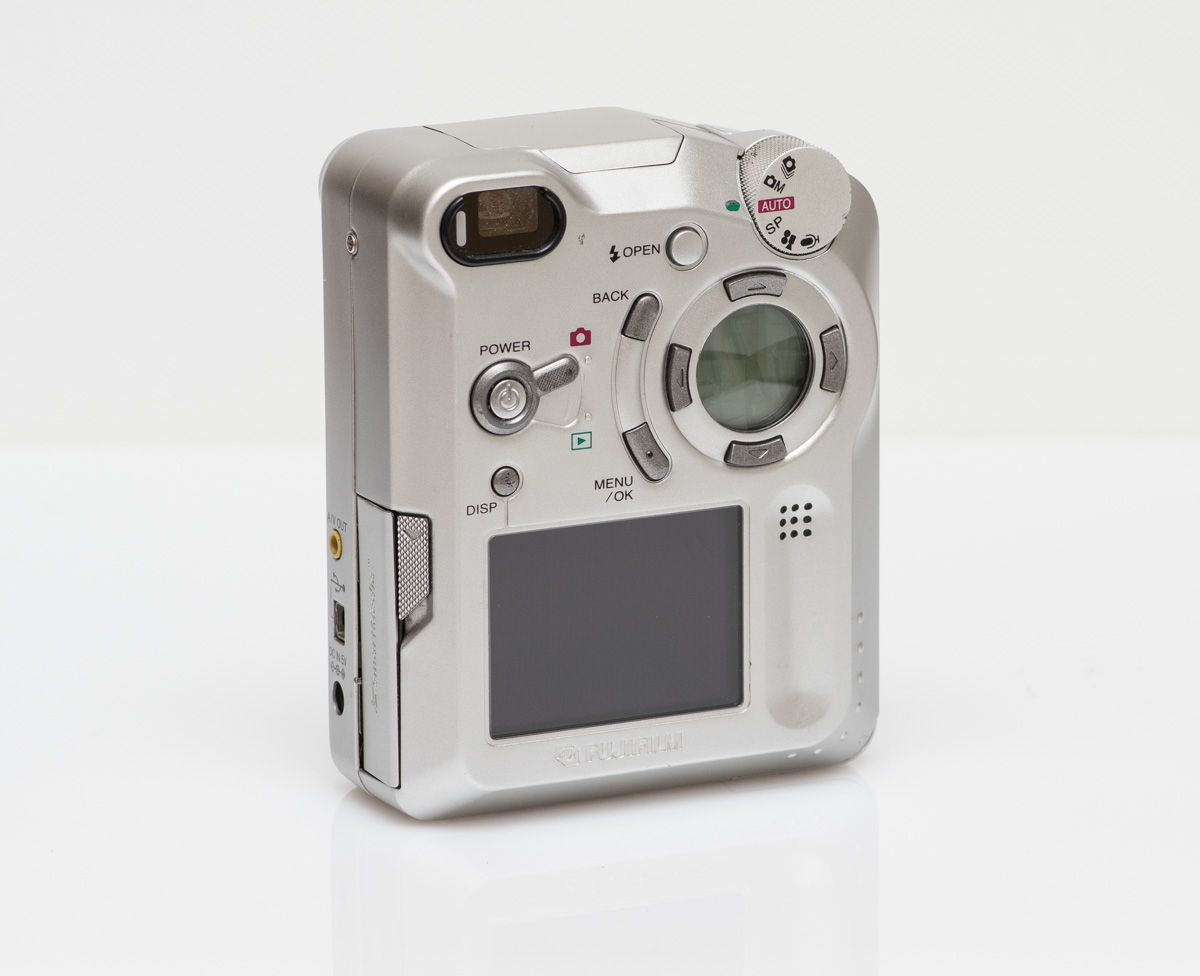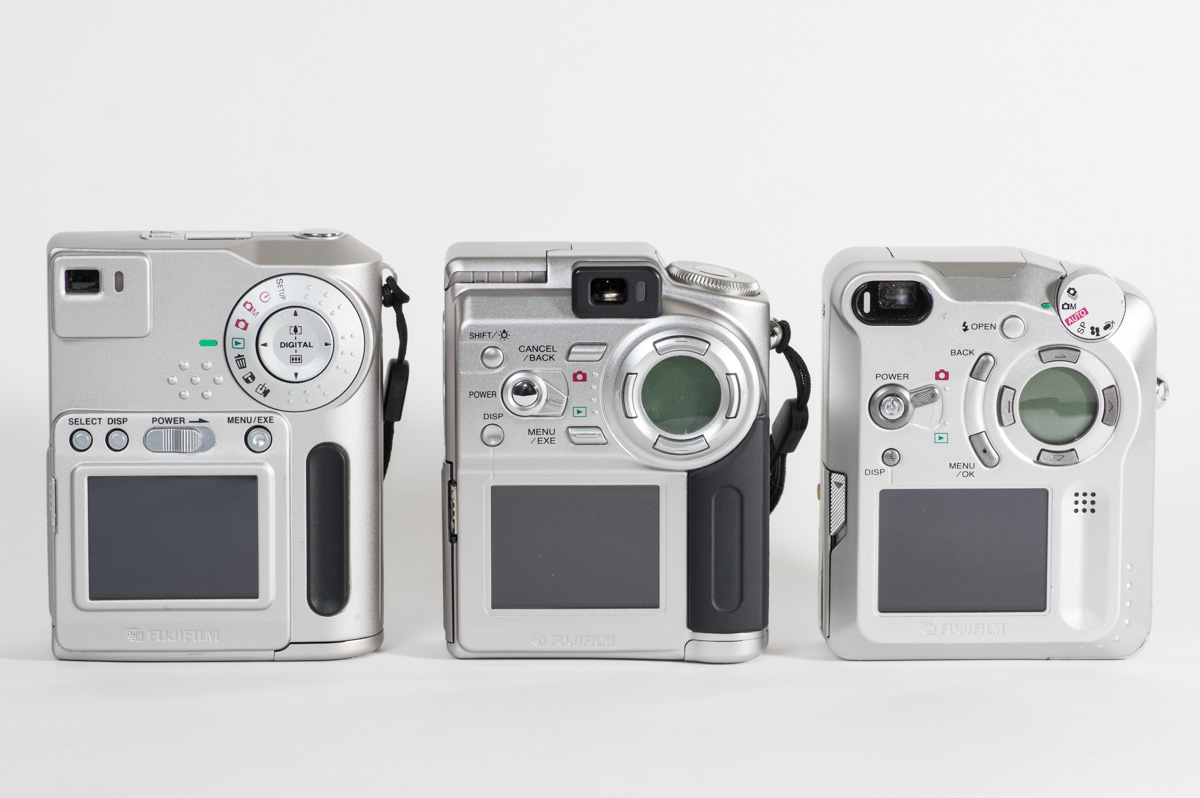Fuji 6800z this is not a review
Lets be honest the Fuji 6800z cant be considered as a viable photography tool after 17 years but as an object of design it is interesting. It sits well outside the norms of how we expect cameras to look and function today. It wasn’t the first camera in the line to have this upright form factor but it was the last and arguably the nicest. The differences in design between it and the previous 4700z may be attributed to the use of an outside design firm F.A. Porsche and the choice to use higher quality materials. Briefly digressing to talking about it as a camera it used what Fuji referred to as a super CCD and as you may notice it doesn’t say how many megapixels it was on the outside which seemed like it was almost a bylaw for cameras at the time to have. This may be due to the fact that it used interpolation to go from its native 3.3mpixels to 6.6mpixels with a lot of debate and controversy to go with it.
From Left to right the Fuji Finepix 700, 4700 Zoom, 6800Z
Porsche Design has refined the vertically shaped design of the two FinePix cameras, ensuring improved grip for safer and more comfortable handling. Switches and other operational buttons are also clearly laid out on the back of the camera body, enabling all operations to be carried out using one hand in a truly user-friendly design. Other design improvements are apparent, too. For example, the small dot matrix LCD inside the four-direction button is brighter and thus easier to use than those in earlier models.
I don’t think that any camera companies would attempt a design like this today (2018). It strikes me as ironic that after the burst of different digital camera design ideas it has been the more traditional looking cameras that wouldn’t look out of place beside many film cameras that have won out. Even phones which are arguably the point and shoot cameras of today have settled into what looks like a single form factor with outlier’s being smacked down by the market.



